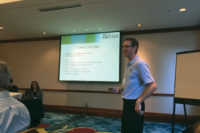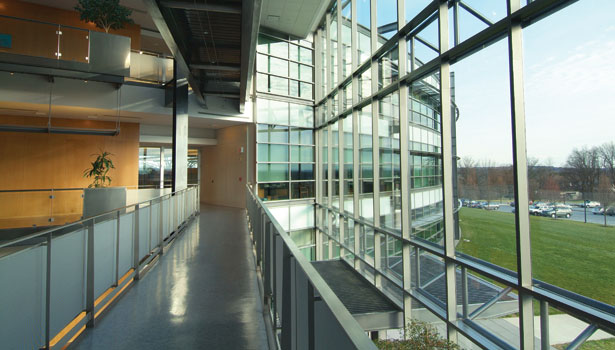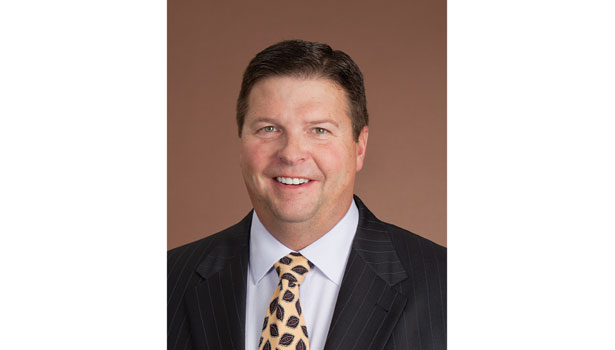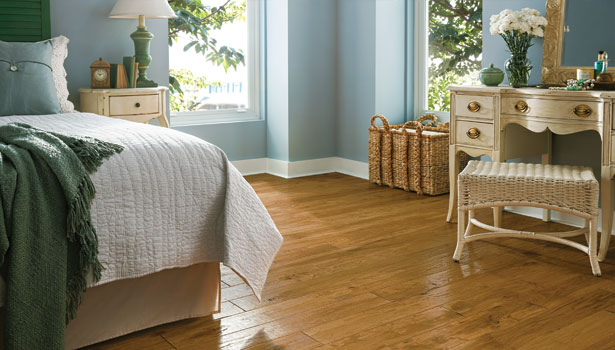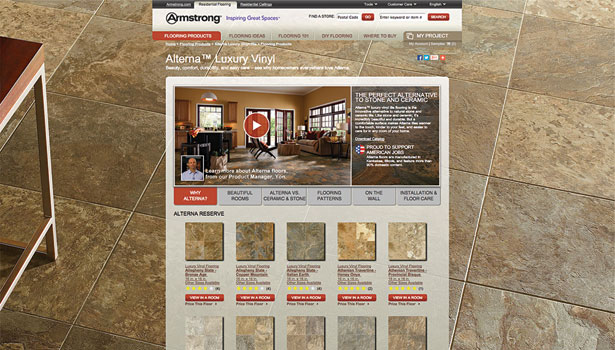Let’s TalkFloor








We recently had an opportunity to sit down with Maier to talk about his new assignment and his vision for Armstrong’s flooring unit. The following are some excerpts from our conversation but you can listen to the interview in its entirety by visiting the TalkFloor.com website, which is also accessible via Floor Trends’ website, floortrendsmag.com.
TF: You joined Armstrong in 2010 four years after the company emerged from bankruptcy and immediately following the end of the recession in 2009. From your vantage point, what were the company’s greatest needs at that time?
Maier: In my role as senior vice president of global operations my view was tuned in to the manufacturing operations. Chapter 11 was a cleansing process the company needed to go through, putting the asbestos liability behind us. That was a very distracting process and consumed a great deal of energy verses innovating and creating products for our customers and our customers’ customers.
The bigger impact I saw was coming in following the 2008 adjustment in the global economy. At that time most companies were trying to predict what this recovery was going to look like. Was it going to be a “V,” a “U,” a “W,” an “L”? What was the shape of that curve going be?
We came to the revelation in 2010 there was not going to be a bounce back and the reality for the market was going to cause us to need to make adjustments to our footprint whether it was our plant footprints and the consolidation of our facilities or aligning our SG&A to the new realities of what the markets were willing to support. It was necessary for us to do that.
Prior to that we had really tried to hang on, hoping there would be a bounce back in the economy and we didn’t want to go too soon and miss an upside of a recovery. When I came in, the realization the recovery was going to be long and slow caused us to strategically take on the tough work of these issues. We globally consolidated 11 facilities here in the U.S. and in Europe.
At the same time we did have an eye toward the future and selectively started making some pretty significant investments in new plants and facilities including here in the U.S. and in emerging markets largely in China, Southeast Asia, India, which were places because of the bankruptcy we had underinvested.
TF: This year has not produced the growth that many had foreseen. Talk about 2014 so far and your expectations for the remainder of the year.
Maier: We are seeing the builder segment come back, although it’s not as quick as we had hoped. Retail has been more of an up-and-down situation. From month-to-month it has been interesting to see just how much variability we’re seeing in this area.
Our response to that has been the market is going to do what the market is going to do and we have to become the supplier of choice to the industry. And we do that by having state-of-the-art innovation in our products, bringing new design elements to the equation, being the best supplier at a cost and price that makes us attractive and viable in the marketplace. That’s where we are focused.
We are very fortunate that, as a public company, our board and our management team are really focused on the longer term. Thinking in the three- to the five-year range is our planning horizon. Realizing that from quarter-to-quarter we will have ups and downs in the market. I’d like to be able to tell you what the rest of 2014 will be like, but we will just have to roll with the punches.
TF: You mentioned some of the company’s new facilities. Can you expand a bit on them?
Maier: Yes. Actually, it’s something that I am very passionate about, even though it was very difficult with all of the consolidation work we needed to do. This was a necessary step. But it was balanced with significant investments back into the business. And, I’m pleased to say in several of these cases that included relocating oversees manufacturing back to the United States. This is what I’m calling the renaissance of manufacturing in North America.
This started with the investment of our glass line in Lancaster, Pa., four years ago, where we brought back commercial sheet to the U.S. from Europe. We are in the process of bringing our engineered wood manufacturing from China back to the U.S. And last, and certainly not least, we will have a new LVT plant in Lancaster. We will be bringing that production from China back to the U.S.
You may ask, are we doing this to be patriotic? That is certainly a great element of it, but that’s not the driver. This is just good business. Shortening those supply chains will allow us to be a better supplier to the industry, shortening our lead times and it will as well allow us to bring innovation that is specific to the marketplace because of our alignment here, which is much closer.
We’re not just bringing products to the U.S., we’re also innovating and driving new features and benefits of our products and doing it in ways that allows us to be radically competitive in the marketplace.
TF: Do you anticipate further changes in the manufacturing sector going forward?
Maier: Nothing is static here and we will continue to invest based on where the markets are headed. As we have discussed, LVT is a market that is very strategic to us.
TF: Technology is changing things dramatically in the retail sector. Big box players are investing heavily in technology, as are major online players, readying themselves for market share increases. Do you see this as threatening to the independent retailer?
Maier: That’s a good question and I’m not sure if I have a fully developed answer for you. Every other industry has seen this phenomenon so I think the premise of the question is spot on. I don’t think the strategy necessary disadvantages the retailer assuming [he] participates in the process. This is a styling and design product and consumers really need the professional touch that one can get from a retailer to help guide the consumer in what is really a sizable investment. This is a critical element.
How do you tie a front-end into that? That’s where I think Armstrong has a critical advantage, as consumers are using the Armstrong website to do their research and understand what the options are out there. We then direct these consumers toward retailers in their area to be able to make a final selection.
I think there is a nice marriage of the technology in the digital era and Armstrong is playing a role in getting those consumers to move forward with their purchase and more than likely making the final decision within a retail environment.
TF: A couple of private equity firms ValueAct Capital and Eton Park Capital have taken positions in the company. This has revived break-up talk among investors. What are your expectations as to how this will play out to?
Maier: I have very limited insight. What I can tell you is that ValueAct in particular sees great value here, sees a great future and is obviously putting their money where their mouth is and have taken a pretty substantial position.
Right now they are just like any other investor and we want to service all of our shareholders. Certainly if any of our investors have great ideas for us we are all ears and happy to listen.
TF: The company has invested in a number of areas and a number of different products. Talk about your expectations for the various products you are invested in and where do you see the greatest potential?
Maier: We see LVT as a real focal point for us. That doesn’t mean that we will put any less attention toward hardwood, resilient offerings, laminate and VCT. Those are very important segments, but from a growth trajectory, we feel that LVT has the greatest potential and it’s where our technology and innovation will collide.
Hardwood, both engineered and solid, continues to be an area of focus and investment for us and we feel very good about the prospects for not only that business as it exists today but what we see as a consumer trend and growth in that segment. It’s also very important to our distribution partners and we are very committed to that.
Resilient offers great value and great looks and as an industry we are bringing design elements in there. We are also very focused on the education and health care sectors and see great opportunity with many of our commercial products, with the product being best suited for those environments.
Editor’s note: We wish we had more space to continue this insightful conversation. However, you can listen to the interview it in its entirety by visiting TalkFloor.com, or by accessing it through Floor Trends’ website, floortrendsmag.com.
We’d also love to hear your feedback of this and other conversations you’ve watched or listened to on the site, as well as any ideas of people or companies you’d like to see interviewed. You can contact either Dave Foster at davefoster@talkfloor.com, or Matthew Spieler at spielerm@bnpmedia.com.
Looking for a reprint of this article?
From high-res PDFs to custom plaques, order your copy today!





